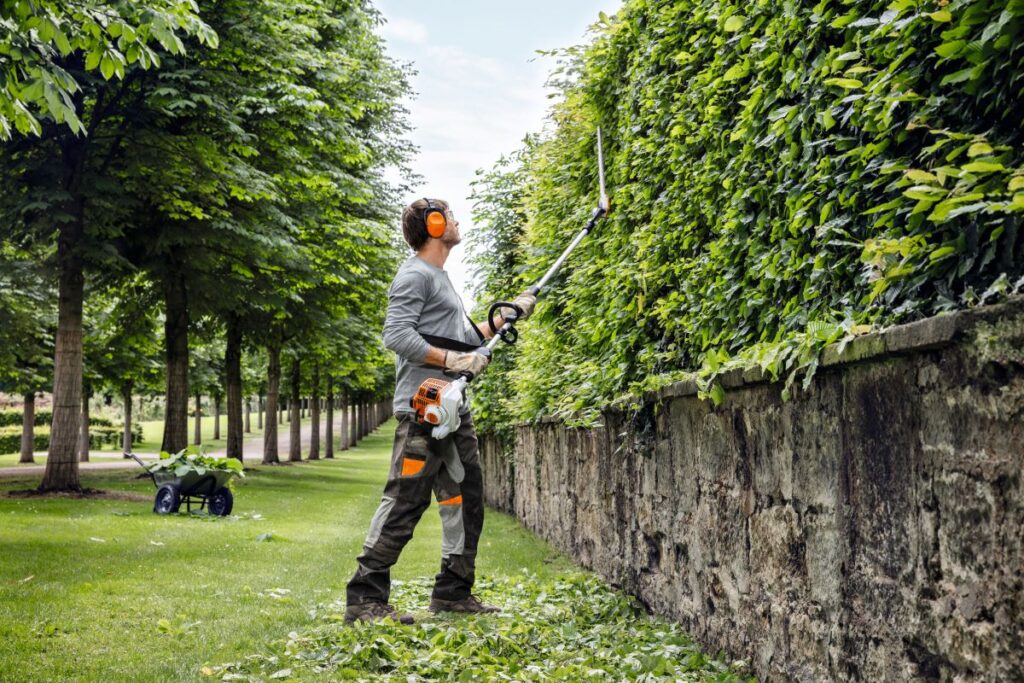Introduction to Hedge Trimming
Hedge trimming is an essential aspect of maintaining a tidy and attractive garden. Not only does it enhance the aesthetic appeal of a property, but it also promotes healthy growth and encourages strong, vibrant foliage. However, improper trimming techniques can lead to unsightly shapes and even damage to the plants. This article outlines five must-know tips for achieving a neat landscape through effective hedge trimming.
In addition to its visual benefits, regular residential hedge trimming plays a crucial role in the overall health of your garden. By removing dead or overgrown branches, you allow more sunlight to penetrate the inner foliage, which can stimulate new growth and prevent diseases caused by overcrowding. Moreover, well-maintained hedges can act as natural barriers, providing privacy and shelter for wildlife, thus creating a harmonious ecosystem within your garden. Understanding the specific needs of different hedge varieties is vital, as some may require more frequent trimming than others, depending on their growth rate and seasonal behaviour.
Furthermore, the timing of your hedge trimming can significantly influence the results. For instance, many deciduous hedges benefit from a trim in late winter or early spring, just before the growing season begins. This allows the plants to recover quickly and flourish as they enter the warmer months. Conversely, evergreens may require a different approach, as trimming them too late in the season can expose them to harsh winter conditions. By observing the seasonal patterns and growth cycles of your hedges, you can ensure that your trimming practices align with their natural rhythms, resulting in a lush and vibrant landscape.
1. Choose the Right Time for Trimming
Timing is crucial when it comes to hedge trimming. The best time to prune hedges generally depends on the type of plants in your garden. Most deciduous hedges benefit from a trim during late winter or early spring, just before new growth begins. This timing allows for a healthier and more vigorous regrowth.
Conversely, evergreen hedges can be trimmed in late spring or early summer. It’s essential to avoid trimming during the late autumn months, as this can expose the plants to harsh winter conditions, potentially leading to damage.
Consider Seasonal Changes
Understanding the seasonal growth patterns of your hedges is vital. For instance, flowering hedges should be pruned immediately after their blooming season to avoid cutting off next year’s flowers. Taking note of these seasonal changes will ensure that your hedges remain healthy and vibrant throughout the year.
Local Climate Considerations
The local climate also plays a significant role in determining the best time for trimming. In warmer regions, hedges may grow more rapidly and require more frequent trimming. Conversely, in cooler climates, growth may slow down, necessitating less frequent maintenance. Always consider your local weather patterns when planning your trimming schedule.
2. Use the Right Tools
Having the appropriate tools is essential for effective hedge trimming. The right equipment not only makes the task easier but also ensures a clean cut, which is crucial for the health of the plants. Basic tools for hedge trimming include shears, hedge trimmers, and pruning saws.
Manual shears are ideal for small hedges or detailed work, while electric or petrol-powered hedge trimmers can handle larger areas more efficiently. Additionally, a pruning saw may be necessary for thicker branches that cannot be managed with standard shears.
Maintenance of Tools
Regular maintenance of tools is equally important. Keeping blades sharp will ensure clean cuts, reducing the risk of tearing the plant tissue. After each use, clean the tools to prevent the spread of diseases between plants. A simple wipe with a disinfectant will suffice to keep tools in good condition.
Safety First
Safety should always be a priority when using trimming equipment. Wearing protective gear, such as gloves, goggles, and sturdy footwear, can prevent injuries. Additionally, ensure that any electrical equipment is used according to the manufacturer’s guidelines to avoid accidents.

3. Understand the Hedge’s Growth Habit
Each type of hedge has its unique growth habit, and understanding this can significantly influence trimming techniques. Some hedges naturally grow tall and wide, while others may have a more compact growth pattern. Recognising these characteristics will help in achieving a balanced and aesthetically pleasing shape.
For example, a formal hedge may require a more structured approach, with straight lines and sharp angles, while a more informal hedge can be allowed to grow in a more natural shape. Understanding these nuances will assist in maintaining the overall design of the garden.
Assessing the Hedge’s Health
Before trimming, it’s essential to assess the health of the hedge. Look for signs of disease or pest infestations, as these can affect the trimming process. If a hedge is unhealthy, it may require special care or even professional intervention before any trimming takes place.
Trimming Techniques
Employing the right trimming techniques can make a significant difference in the final appearance of the hedge. For instance, trimming the top of the hedge slightly narrower than the bottom encourages sunlight to reach the lower branches, promoting healthy growth. Additionally, using a technique known as “topping” can help maintain a desired height without compromising the overall health of the plant.
4. Maintain a Consistent Shape
Consistency in shape is vital for creating a neat and tidy landscape. When trimming hedges, it’s important to maintain a uniform shape that complements the surrounding garden. Using a string line or measuring tape can help achieve straight lines and even heights.
For rounded hedges, a good technique is to use a template or guide. This can be as simple as a piece of cardboard cut into the desired shape, allowing for a more precise trimming process. Consistency not only enhances the visual appeal but also contributes to the overall health of the hedge.
Regular Maintenance Schedule
Establishing a regular maintenance schedule is key to keeping hedges looking their best. Depending on the type of hedge and its growth rate, trimming may be required every few weeks during the growing season. Regular maintenance prevents overgrowth, making the task easier and more manageable.
Seasonal Adjustments
It’s also important to adjust trimming techniques based on seasonal changes. For instance, during the peak growing season, hedges may require more frequent trimming to maintain shape, while in the dormant season, less frequent maintenance may suffice. Adapting to these changes will ensure that the hedges remain healthy and visually appealing.
5. Dispose of Clippings Responsibly
After trimming, it’s essential to dispose of the clippings responsibly. Leaving clippings on the ground can lead to pest infestations and diseases, so proper disposal is crucial. Many local councils offer green waste collection services, which can be an excellent option for disposing of garden waste. You may like to visit https://plantsislamabad.com/breaking-down-the-cost-of-hedge-trimming-a-simple-homeowners-guide/ to get more about the cost of hedge trimming.
Alternatively, consider composting the clippings if they are free from disease. This not only reduces waste but also provides nutrient-rich compost for the garden. Shredding the clippings can also help them break down more quickly in a compost pile.

Creating a Neat Garden Environment
Maintaining a tidy garden environment goes beyond just trimming hedges. It involves ensuring that all aspects of the garden are well-kept, including flower beds, lawns, and pathways. Regular maintenance of these areas will complement the trimmed hedges and contribute to an overall neat landscape.
Engaging Professional Help
In some cases, it may be beneficial to engage professional gardening services for hedge trimming, especially for larger or more complex hedges. Professionals can provide expertise and ensure that the job is done efficiently and safely, leaving homeowners with peace of mind.
Conclusion
Residential hedge trimming is an integral part of garden maintenance that requires careful consideration and technique. By following these five must-know tips—choosing the right time for trimming, using the appropriate tools, understanding the hedge’s growth habit, maintaining a consistent shape, and disposing of clippings responsibly—homeowners can achieve a neat and attractive landscape.
Investing time and effort into proper hedge trimming not only enhances the visual appeal of a property but also promotes the health and longevity of the plants. With these tips in mind, anyone can transform their garden into a beautifully manicured outdoor space.

